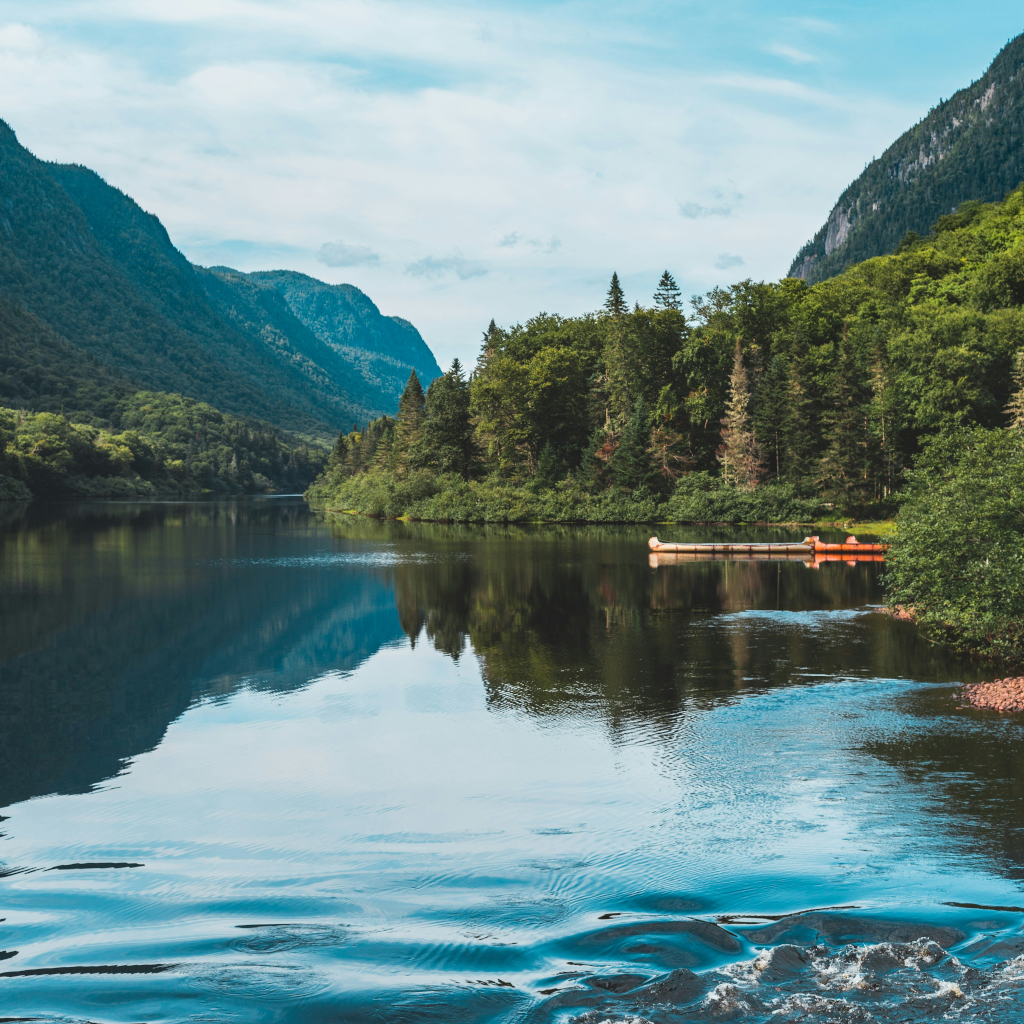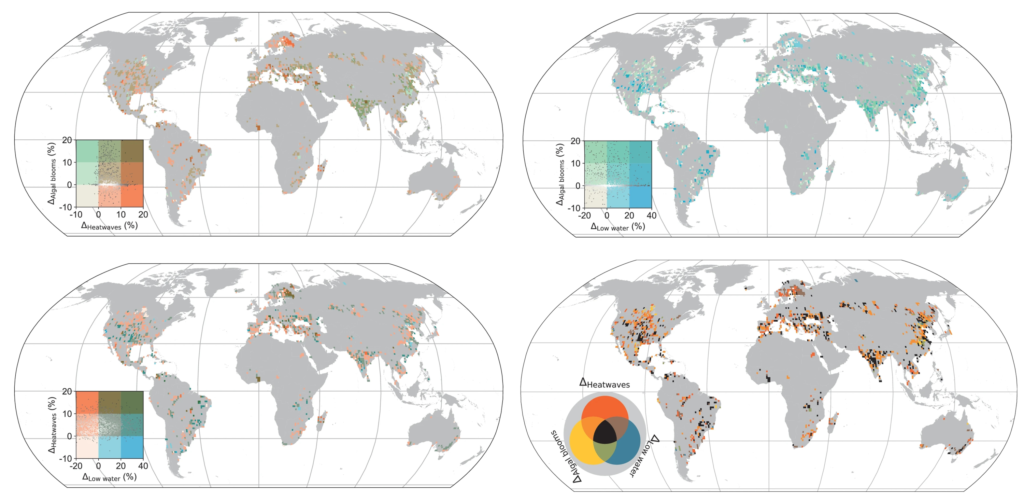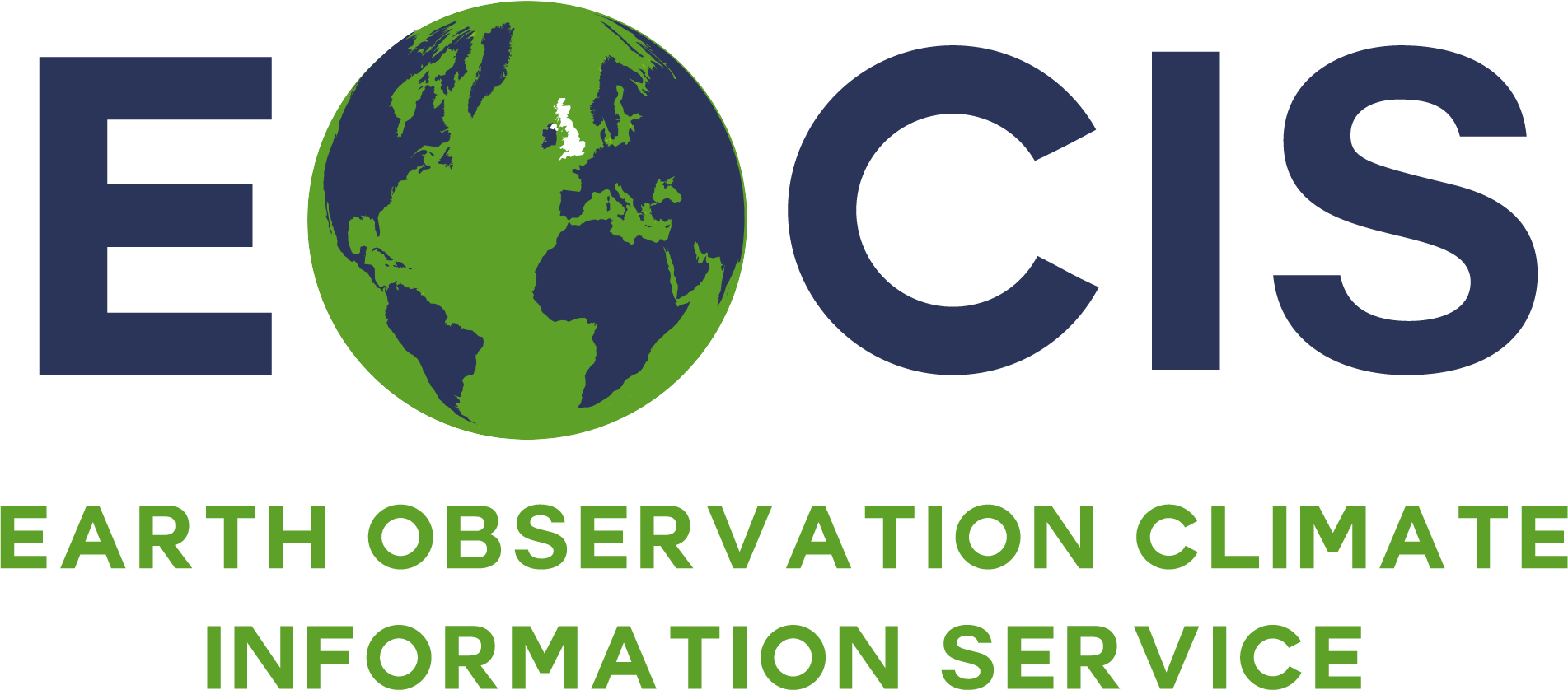Lakes are experiencing increasingly frequent multivariate extremes
By Dr. R. Iestyn Woolway and Dr. Haoran Shi

Lakes hold 87% of Earth’s liquid surface freshwater and are key water sources for human society. However, due to both anthropogenic and climatic impacts, lakes are experiencing increasingly frequent extreme events (e.g., heatwaves, algal blooms and anomalously low water levels), which have various negative influences on lacustrine ecosystems.
Thanks to the rapid development of satellite technology and Earth Observation (EO) initiatives like the UK EO Climate Information Service (EOCIS), multivariate extremes occurring in lakes can now be extensively evaluated worldwide. We select 2,724 lakes for such an analysis, representing bloom-affected lakes across the globe.
Heatwaves
Lake heatwaves refer to extended periods of abnormally high lake surface temperature. Exposure of lake ecosystem to extremely high temperatures may lead to irreversible mortality of aquatic species and promote the growth of harmful cyanobacteria. Integrating both satellite remote sensing and numerical modelling, a comprehensive dataset of global lake surface water temperatures in the last 40 years were established and used to detect the increasing trend of lake heatwaves due to climate warming. Among the 2,724 study sites, the occurring frequency of heatwaves has increased in the vast majority (92%) of lakes, by 4.7% on average, comparing the historic (1985 to 1999) and contemporary (2010 to 2019) periods.
Algal blooms
Rapid proliferation of harmful algae in lakes (so-called ‘algal bloom’) can produce toxins that threatens both aquatic ecosystems and human health. It has been extensively documented since 1960s due to eutrophication of water bodies and has been found to strongly correlate with the increase of temperature. Based on a colour-based algorithm, algal blooms can be detected from remote sensing images taken by satellites. Across the 2,724 study sites with sufficient EO algal bloom data, we found that the occurrence of algal blooms has increased in 56% of the bloom-affected lakes, by 2.7% on average.
Low water level
A low water level extreme signifies the temporary shortage of freshwater resources. Extreme declines of lake water level not only influence the water supply for local communities, but also affect physical and biochemical processes in lakes. Such an extreme is also directly related to global warming since higher temperature means faster evaporation and climate change has been found to induce more frequent and severe droughts. Low water level extremes can be identified from surface water extent data obtained through remote sensing observations. Our EO data shows that 50% of the 2,724 studied lakes have experienced an increase in the occurrence frequency of the low water level extremes, by 0.7% on average.

What about bivariate and multivariate extreme events?
The situations are even worse in lakes that experience increasing occurrence frequencies of more than one extreme event. Across the studied sites, 75% of the studied lakes have experienced a simultaneous increase in bivariate extreme events, among which, 51% have experienced increases in heatwaves and algal blooms; 46% in low water levels and heatwaves; and 27% in algal blooms and low water levels.
In 25% of the studied lakes, the occurrence frequencies of all the three extreme events have been observed to increase simultaneously from 1980s. These lakes are distributed worldwide but are most commonly found in Asia, which is particularly concerning given the continent’s large population and high demand for freshwater.

In addition to jointly threatening lake ecosystems, these extreme events also interact, with one extreme event potentially triggering another. For example, prolonged period of heatwaves can significantly hasten evaporation and thus cause rapid decrease of water level; heatwaves and low water levels can lead to an increased occurrence of algal blooms. With the continued warming of the climate, extreme events in lakes are expected to occur more frequently throughout the rest of 21st century. Consequently, more and more lakes will experience the increase of more than one extreme events. Because data from relative few lakes is measured and/or made available, satellite remote sensing is essential for providing climate information about changes in extreme events affecting lakes, to give a basis for adaptation measures.
